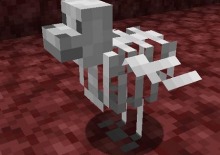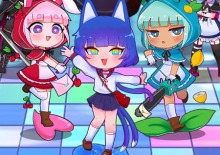Advertisement
The Boba Tea Shop
The Boba Tea Shop is a narrative-driven horror game disguised as a quiet business simulator. At first glance, you play as a woman starting fresh, running a small tea shop where customers arrive with simple orders and calm music plays in the background. But as the days pass and the routine settles in, the shop begins to change. Subtle shifts in sound, lighting, and behavior begin to build unease. The game trades loud scares for a quiet, creeping sense that something is deeply wrong.
Routine with Cracks Beneath the Surface
Players begin each shift by crafting boba drinks—choosing flavors, adding pearls, sealing cups, and handing them off with a smile. It’s an orderly, soothing process, made to feel familiar and repetitive. But over time, the repetition starts to fracture. A customer might return with no memory of the last visit. A sound might echo from behind the storage room wall. Cups may seal themselves. These disruptions are quiet, but they grow more frequent, blurring the line between the job and whatever lurks behind it.
Atmosphere over Action
The Boba Tea Shop doesn’t rely on enemies or chases. Instead, it focuses on a slow unraveling of normalcy. The shop’s layout subtly shifts, objects move slightly between scenes, and instructions left by management begin to contradict themselves. Notes appear where they shouldn't, and your reflection seems delayed. The fear here isn’t in being attacked—it’s in losing track of what’s real, and what’s always been slightly off.
A Story Told Through Repetition
The game unfolds through work. Each day brings new faces, and each face brings hints of a larger story. Some characters speak in riddles, others seem to know more than they should. The player uncovers meaning not through direct exposition, but through paying attention to details: who orders what, what changes in the menu, and how the shop’s mood shifts over time. There’s no clear line between progression and madness, and that’s by design.
Core features of The Boba Tea Shop:
Drink preparation gameplay mixed with environmental storytelling
Psychological horror driven by atmosphere, not action
Subtle shifts in space and time that alter each day’s routine
Characters with cryptic behavior and hidden intentions
A slow-build narrative that rewards observation and patience
As you continue to serve tea, the game quietly pulls you deeper, making you wonder whether you’re running the shop or if the shop is running you.








































































































